Before joining the DNEG team in 2011 for Captain America: The First Avenger, Sebastian von Overheidt worked in many studios like Trixter and Pixomondo. His filmography includes various shows such as John Carter, Interstellar, Blade Runner 2049 and Ghostbusters: Afterlife.
Did you get the chance to play to the video games?
I used to be an avid gamer but the Uncharted series actually wasn’t something I played before. I did my research at the beginning of the show just to get a gauge on the overall look of the original game and to understand the different sets and levels within the game. This might sound controversial to anyone who is a fan of the game, but to be honest, I didn’t want to get inspired too much by the game visuals anyway. I would rather study the photography that was shot, and get ideas from the art department’s work. It’s important to look at real photography like the island scenery in Thailand, paintings of Spanish Galleons, images of C17 air-planes or crazy parachute stunts and things like that and get ideas from those kinds of material.
What was your approach about the impressive opening sequence that is an homage to the third video game?
We had some great pre-visualisation (Previs) from DNEG’s Previs team and postvis from RISE as a starting point and from there our Layout Supervisor Kristin Pratt and DFX Supervisor Gregor Lakner and their teams blocked the entire sequence out, inside and outside of the plane. The focus was to have a great rhythm throughout the cut, but also making it look even more dangerous. We wanted to get that sense of high altitude and disorientation across. A lot of attention from Layout, Animation and Compositing went into choreographing the motion of the daisy-chain of cargo crates as well as the cargo crates inside the plane.
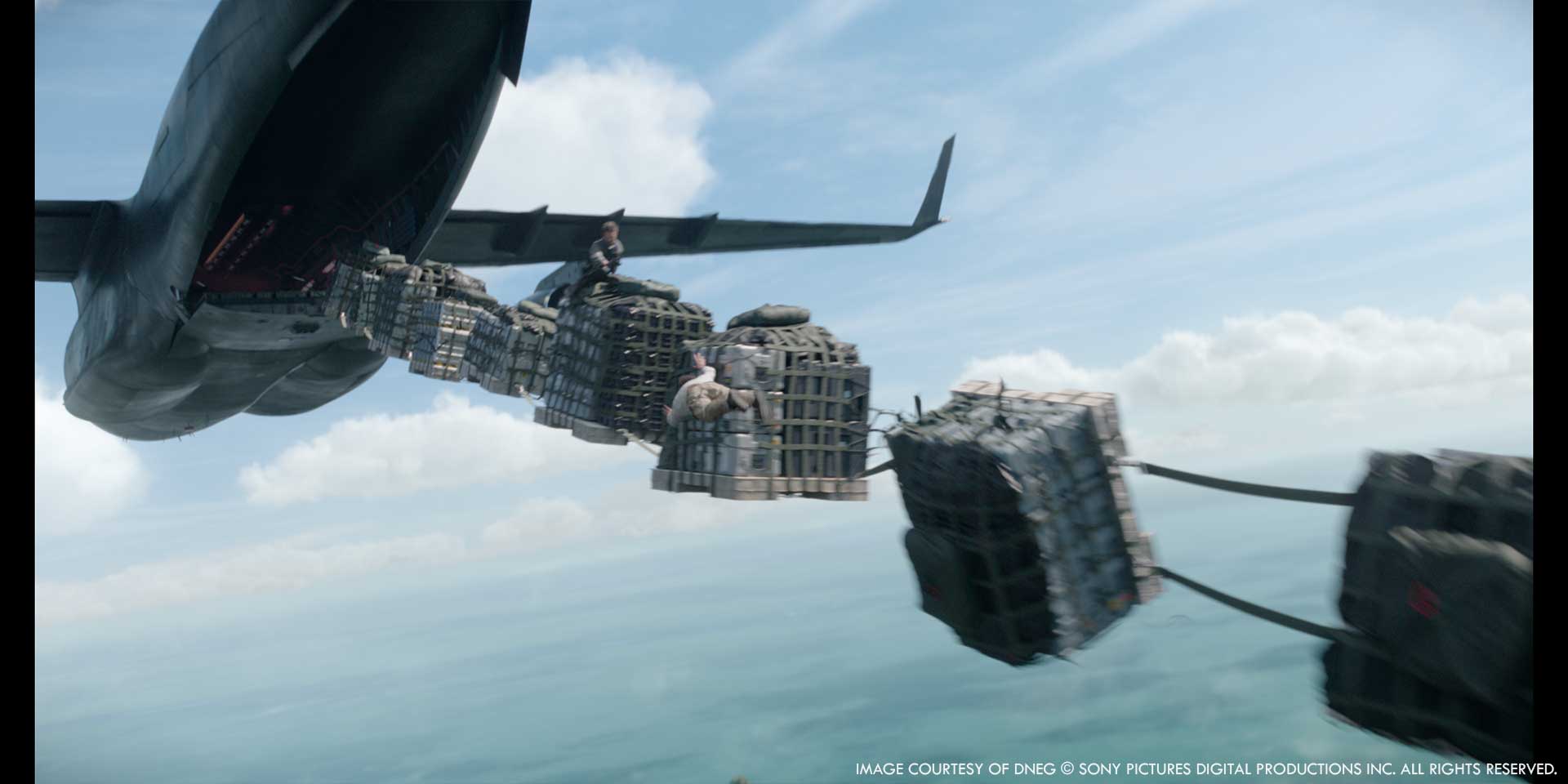
How was the digital doubles created?
We received 3D scans from a photogrammetry rig of the characters from Clear Angle Studios, which would also include references for texture, polarised and unpolarized lighting references. We split all the characters into different tiers based on their screen size and action that would be required. Nathan Drake for example was built to full-screen details with lots of blend-shapes, fine skin details, hair and eyebrows etc. so we could replace his head, create fully digital shots with him or, like in some shots, even transition from practical element to CG and back. We also created three variants of him, each merging Tom Holland’s head with the body of his stunt-doubles in proportion, so that we could use the stunt doubles for more accurate body tracking and therefore only replace the head where possible.
Can you explain in detail about the creation of this sequence?
We started off by scanning all the individual cargo crates and building a basic version of the entire daisy-chain and C17 plane interior. In parallel the C17 was being worked on the exterior as well. Director Ruben Fleischer asked for a slightly customised billionaire’s “Moncada C17” in terms of shape and coating. Then the plates went into matchmove, object and body tracking so we could start blocking out the sequence which is also the first stage where you study all the challenges and problems which would have to be solved, like transitions into digi-doubles or discrepancies between the 3D scanned crates and the ones used on set. The crates on set were obviously modified so that Tom Holland and the Stuntmen could jump around between them, high up on wires, while everything was moving on robot arms to give the sense of snaking of the daisy-chain. Our job was to tie all of that together and then amp up that sense of motion while getting dragged behind a plane. Quite a few shots feature digi-double head replacements or even full body transitions. There are also a number of entirely full CG shots. The environment was stitched based on multi-camera array footage shot at ~7500ft and then augmented to look a bit more desolate in terms of islands. All the clouds and wind FX and debris are CG.
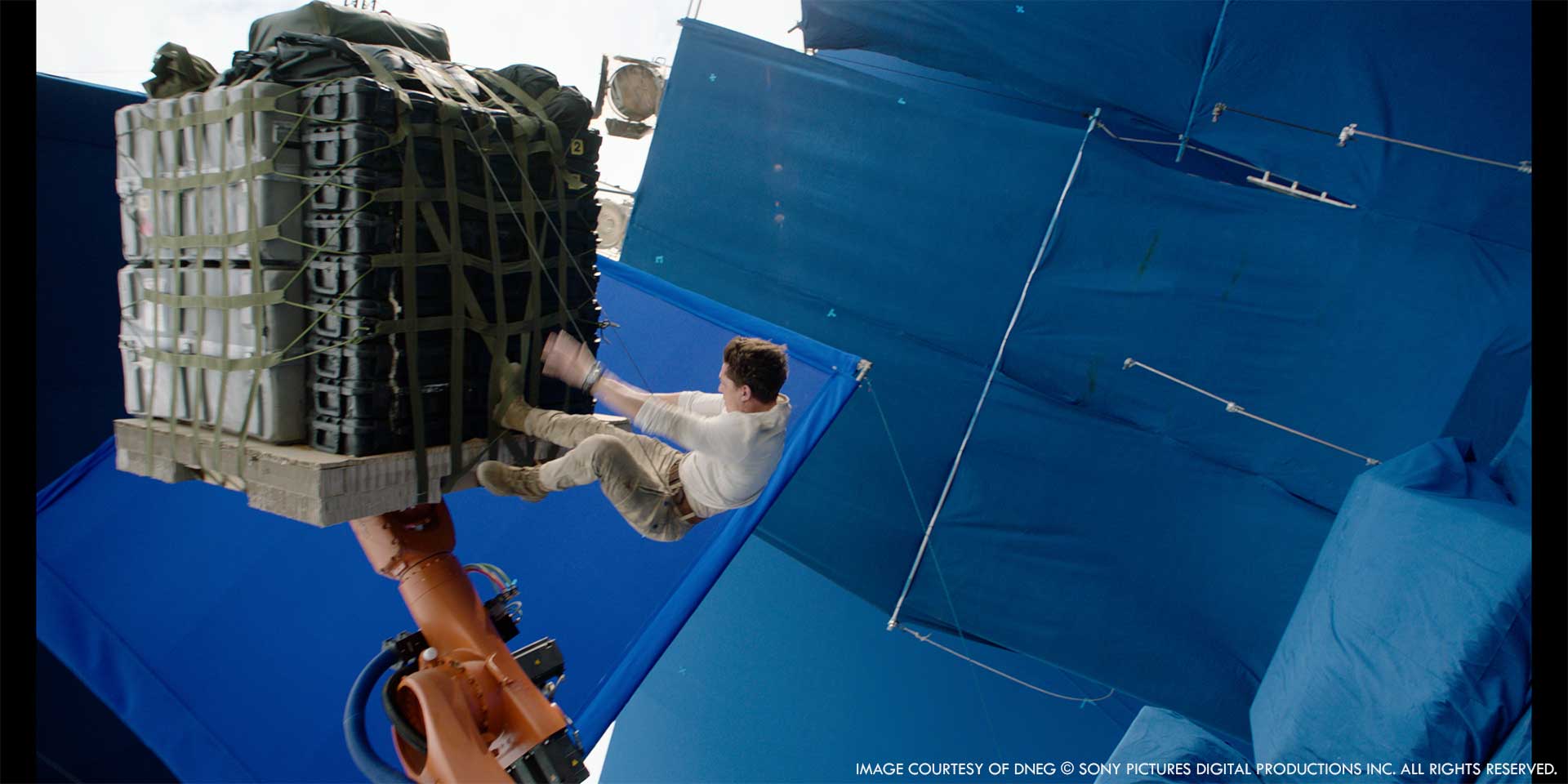
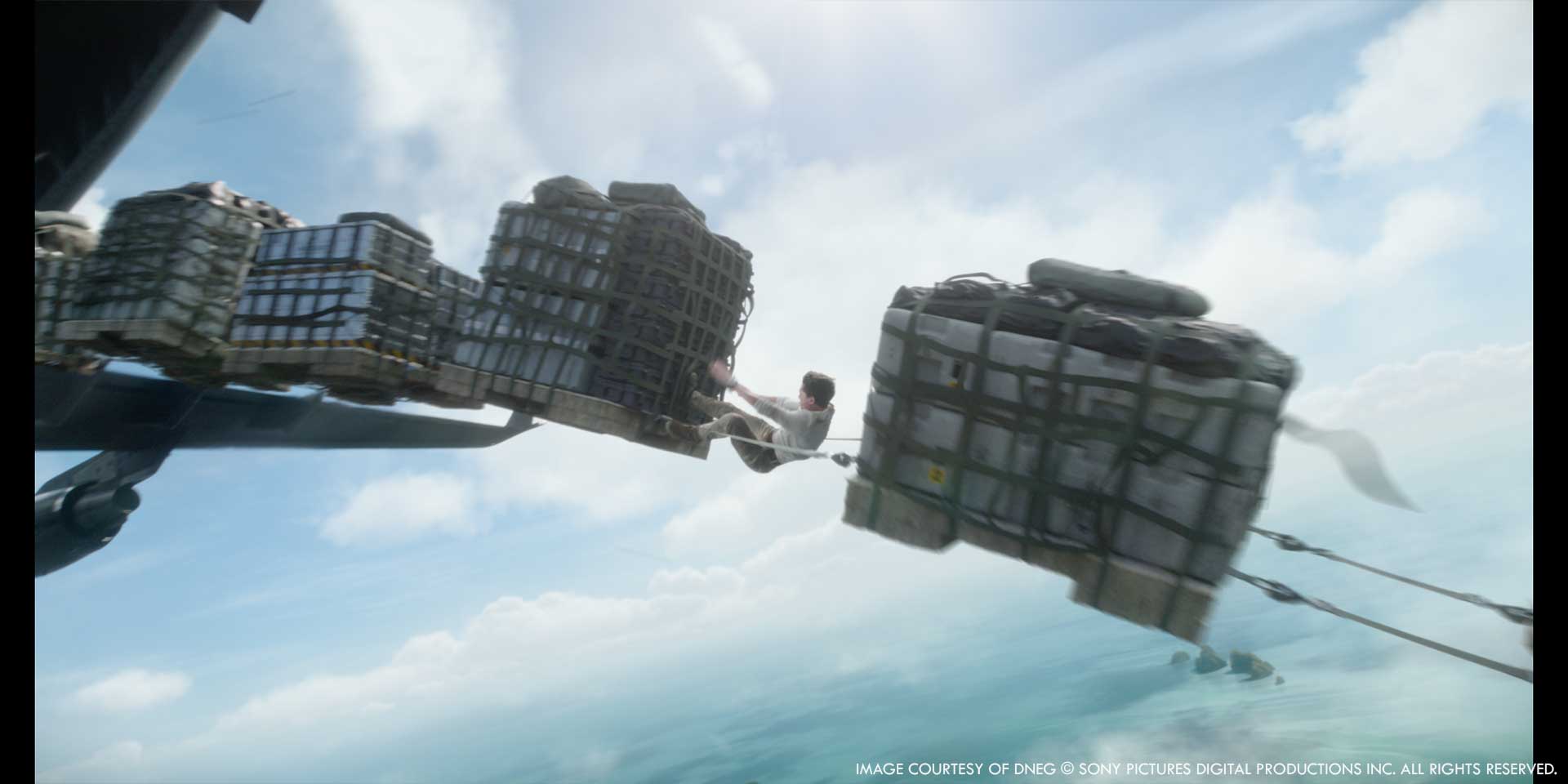
What are the main challenges with this sequence?
Achieving the sense of motion and transitioning into the digi-doubles turned out tricky in some shots. Working with practical elements means you are somewhat restricted in what you can do with the camera and the captured performance. When we were asked to really push those boundaries and decouple from the original camera, we had to come up with clever transitions and take-over points into CG to make it all work. Some shots became complex full-CG shots for that reason as well. All the departments worked really closely to make this happen and it allowed VFX Supervisor Chas Jarrett and Ruben to art direct the sequence in more creative ways.

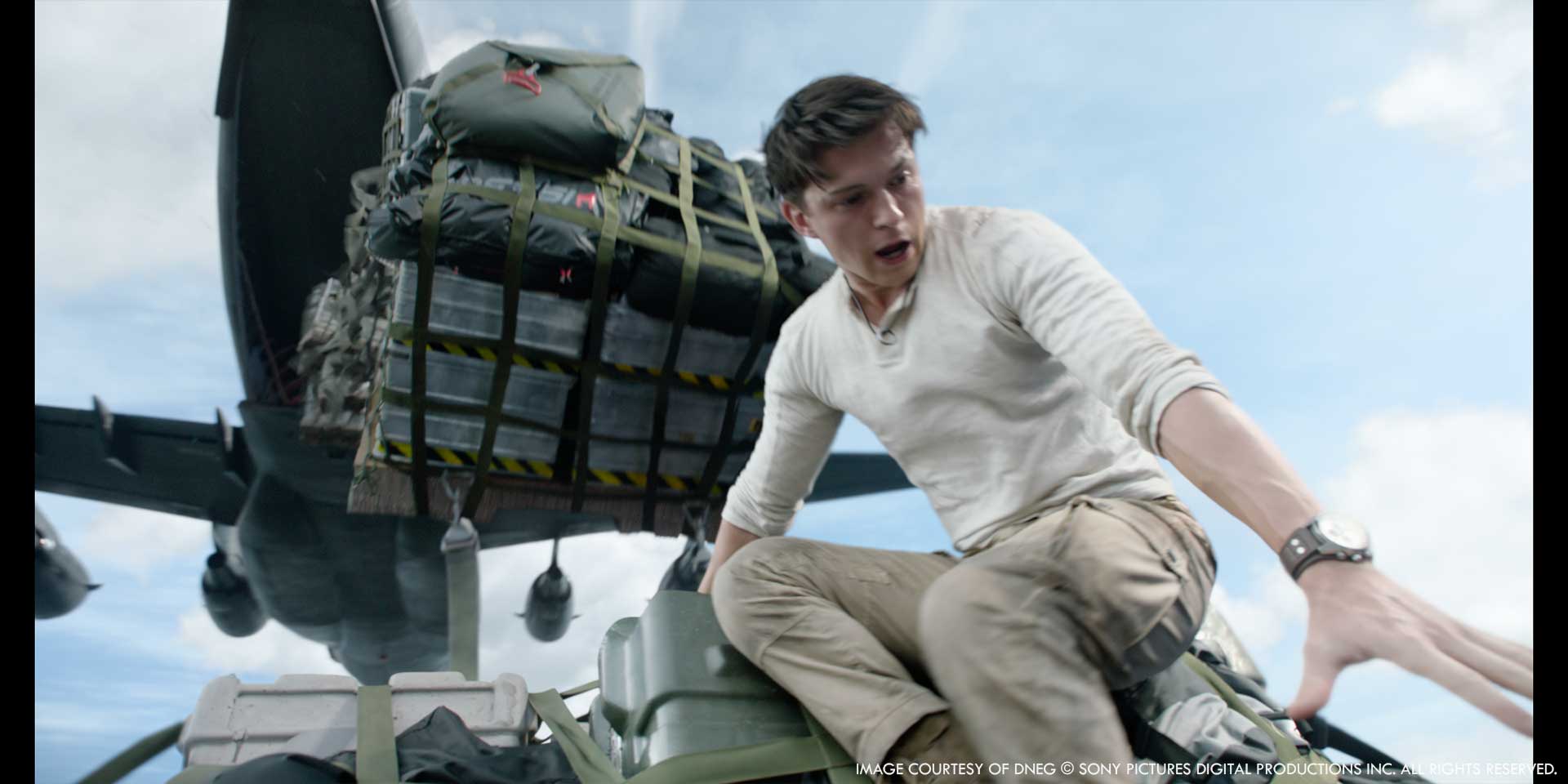
The final sequence is even more crazy. Can you elaborate about it?
The Ship Battle sequence in Act 3 takes us on the journey of the two ships being hauled by helicopters while Nate and Sully try to hijack one of them. This really had everything in it. The sequence was shot on several stages resembling different parts of the ships, which we were extending with CG. The helicopters we had designed are based on some classic cargo helicopters but even beefier. Between the two ships and helicopters, around 20 Mercenaries, Braddock, Hugo and the Scottsman, all become part of different fights which were augmented with head replacements or full digi-doubles. The journey of the flight was across ~330 shots so we built a massive environment that we used to block out the sequence.
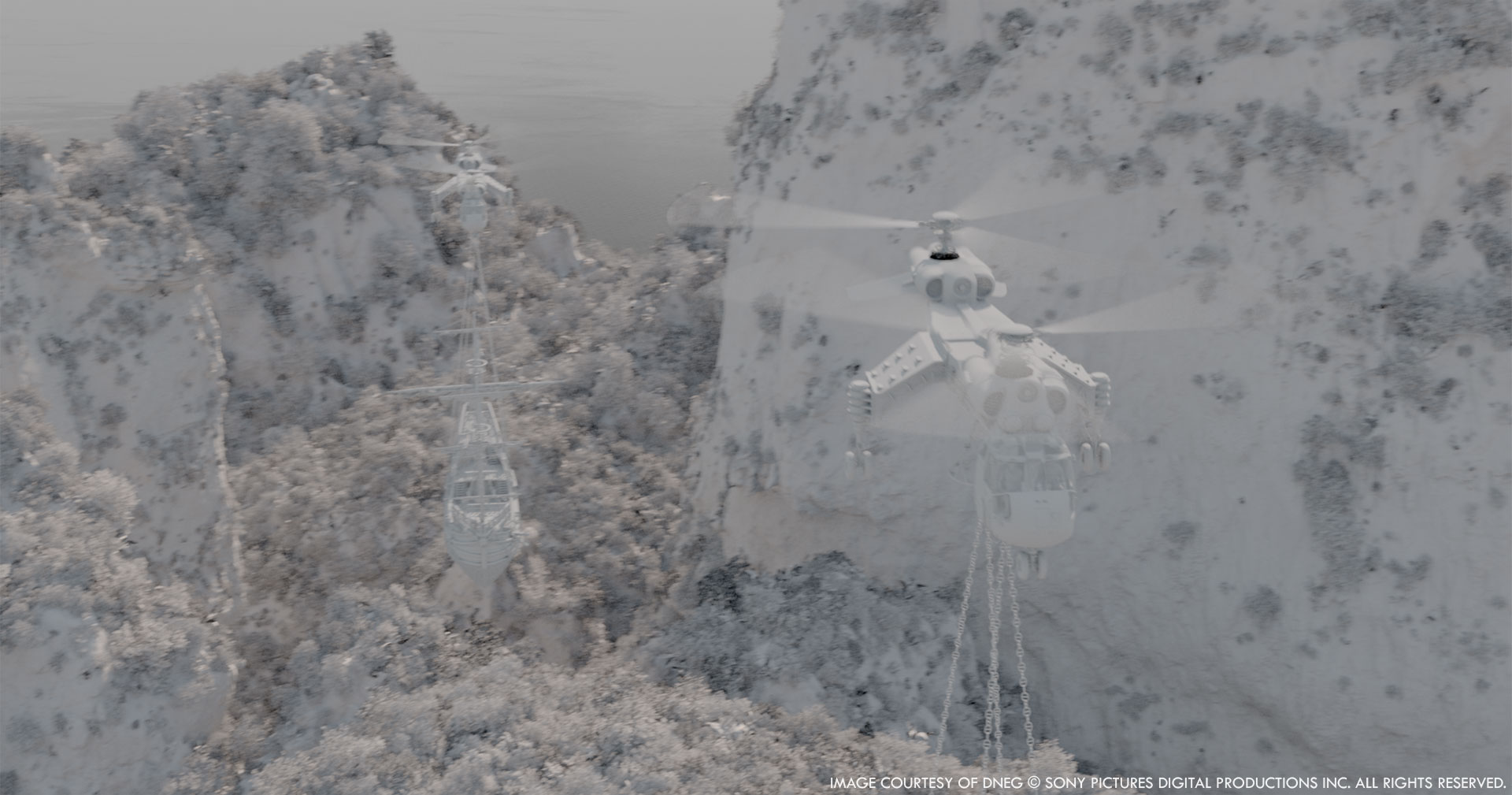
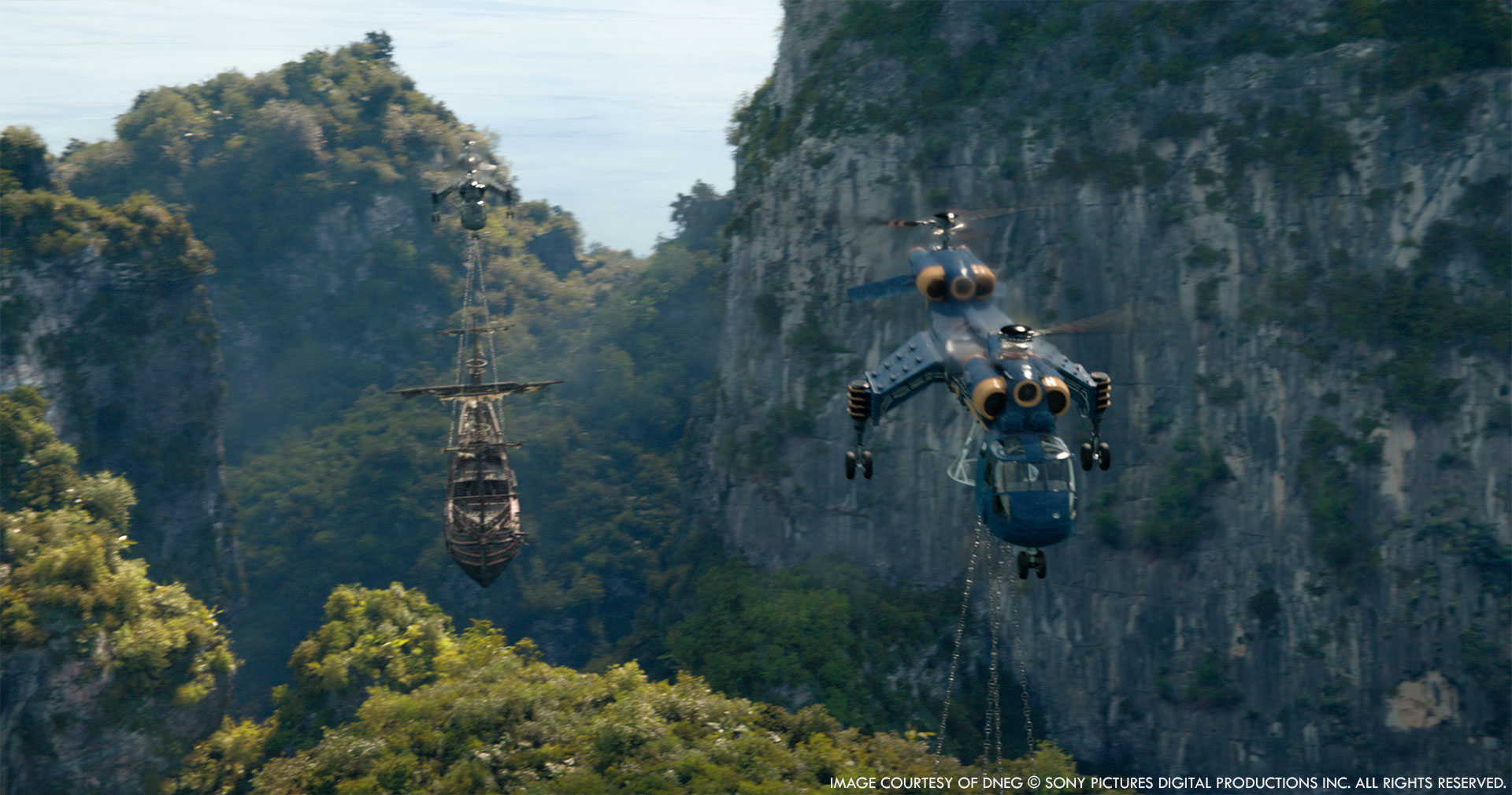
Ruben wanted an action packed sequence. Especially the shots where we see the boats and helicopters move through the karst landscape had to be dynamic and exciting and we wanted to feel their weight and impact on the helicopter’s flight dynamics. Now, real-world physics obviously weren’t a priority on this sequence (movie) to begin with, but we still aimed towards that feel for a plausible animation and also staging the camera in a way that it would guide the audience through the disorienting action and make the ships look massive at the same time. We basically had to stick to real-world physics while also constantly breaking it at the same time. The entire sequence was a close collaboration between our Layout team and the Animation team led by Animation Supervisor Jason Fittipaldi and Animation Lead Konstantin Hubmann, and Production VFX Supervisor Chas Jarret himself whose roots are in Animation.
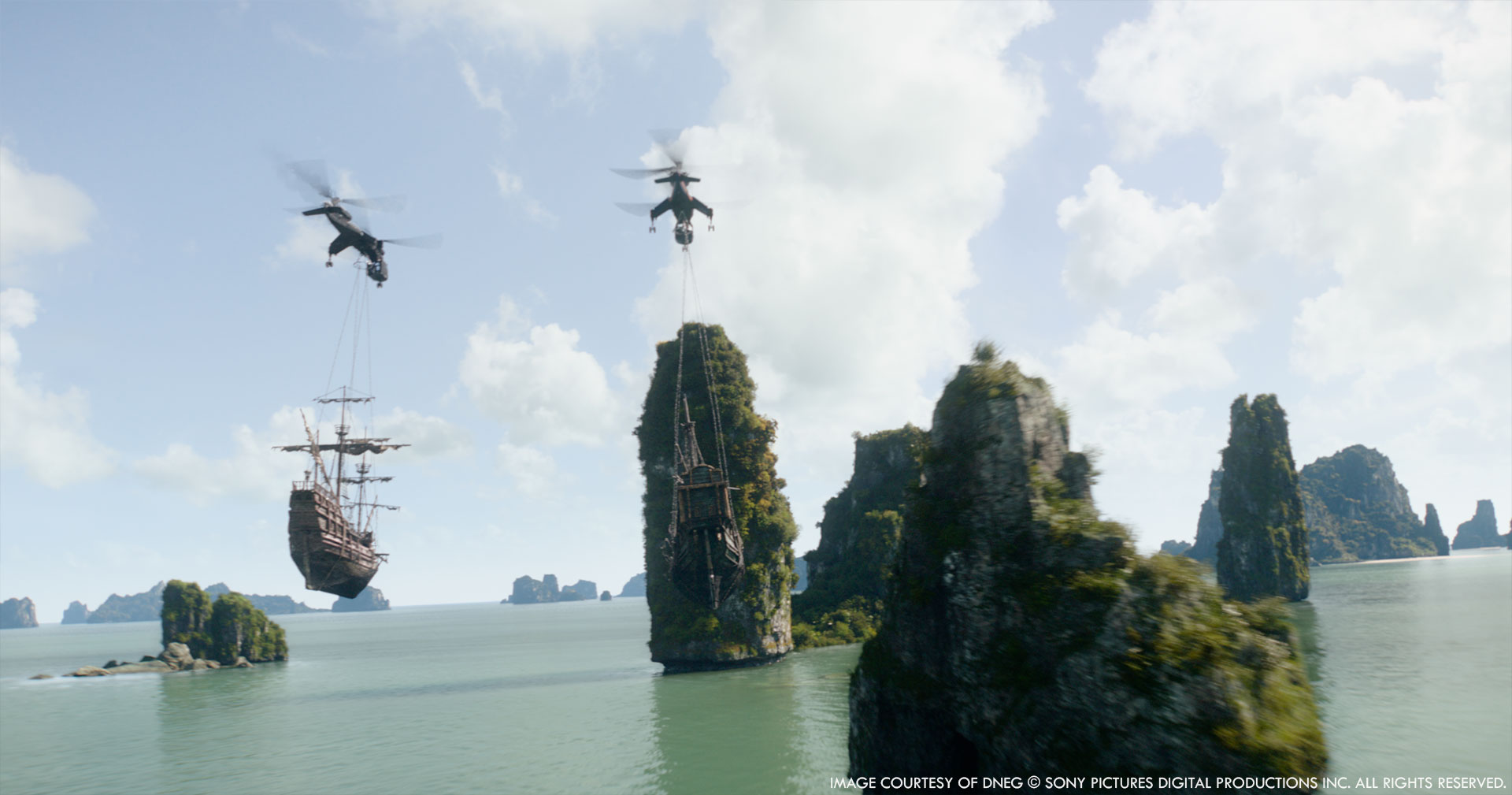
Can you tell us more about the creation of the ships and the environment?
The South China Seas environment was created based on true reference of a location in Thailand. The Production team had shot extensive footage with a multi-camera array that we originally planned to use as background plates. As we were creating a full-CG version of the environment, we soon realised that the team led by Environment Supervisor Gianluca Pizzaia and Environment Lead Matt Ivanov was able to create one big, completely photorealistic version of it that we could fly through, move around and also fully customise to our needs. We got to a point where the DoP was convinced that he was looking at his footage when we presented the work. This gave us and the Director so much more freedom to find great cameras and shot composition, that we decided to go full-CG on the environment all the way through. It made the whole process a lot more efficient as well. Throughout the 3rd act, the daylight also progresses from afternoon to sunset. Compositing Supervisor Kunal Chindarkar and Compositing Lead Ben Outerbridge made sure we transitioned seamlessly into these different lighting conditions and moods as we reach the final shot of the Concepción sinking and Nate and Sully flying into the sunset.
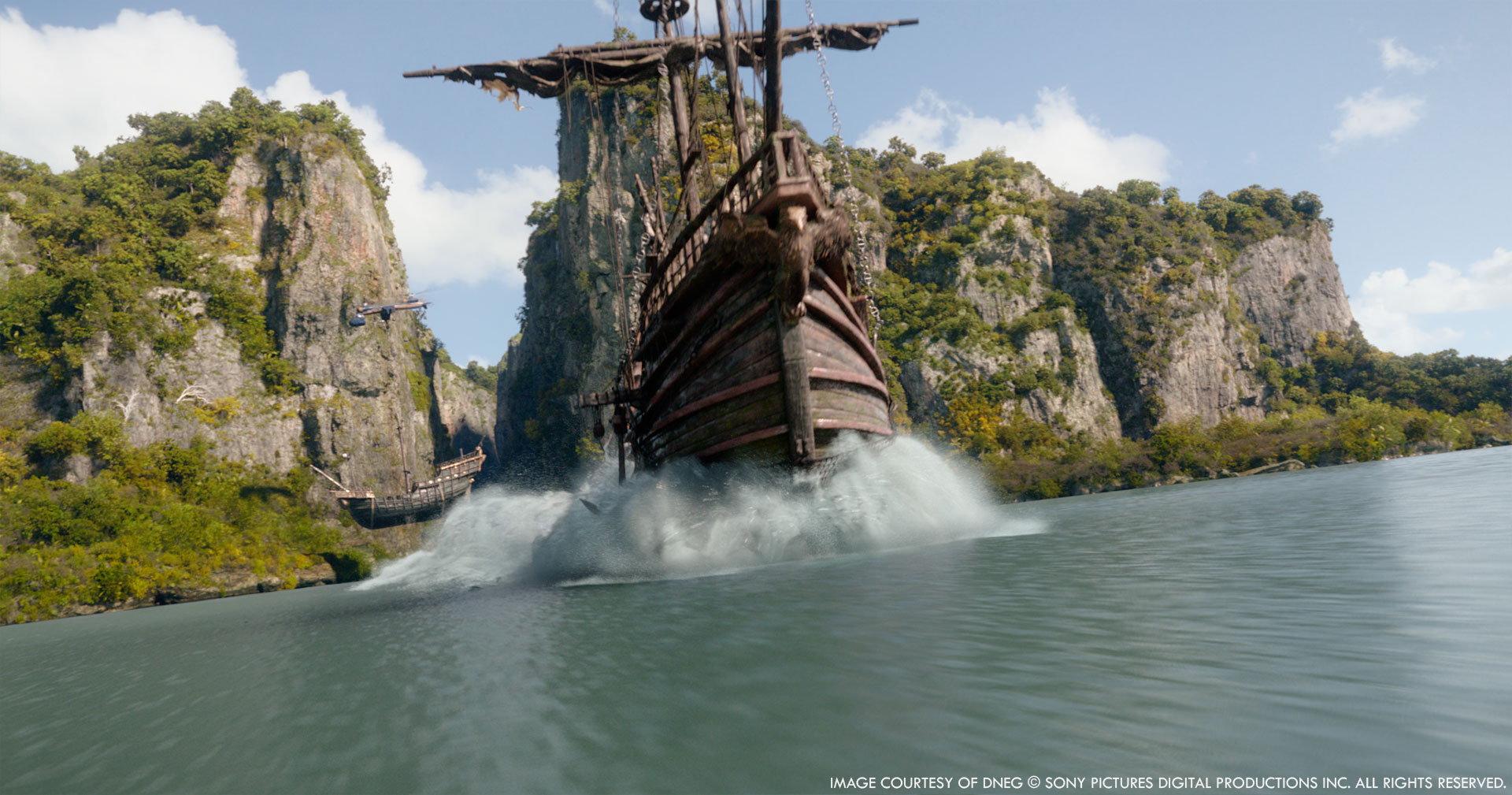
The ships were both highly detailed and complex assets built for every form of action including total destruction. Our CG Supervisor Ummi Gudjonsson and Build Supervisors Chris Cook and Rohan Vaz started by assembling the various onset stages, which had been LIDAR scanned for us to become one ship and then working out all the angles we would need to perfectly align to and extend the shots. In addition to that we also worked with Chas to refine the ship designs. Especially the Trinidad needed some modifications to make a nice composition in the Demar Cave sequence when Nate finds the two Magellan ships. Both ships are fully rigged sailing ships with ropes, cloth banners, sails, flexing masts and yardarms, flapping doors, all the cannons etc. A lot of moving parts which helped to bring across some of the crazy movements and crashes the ships would do in the sequence.
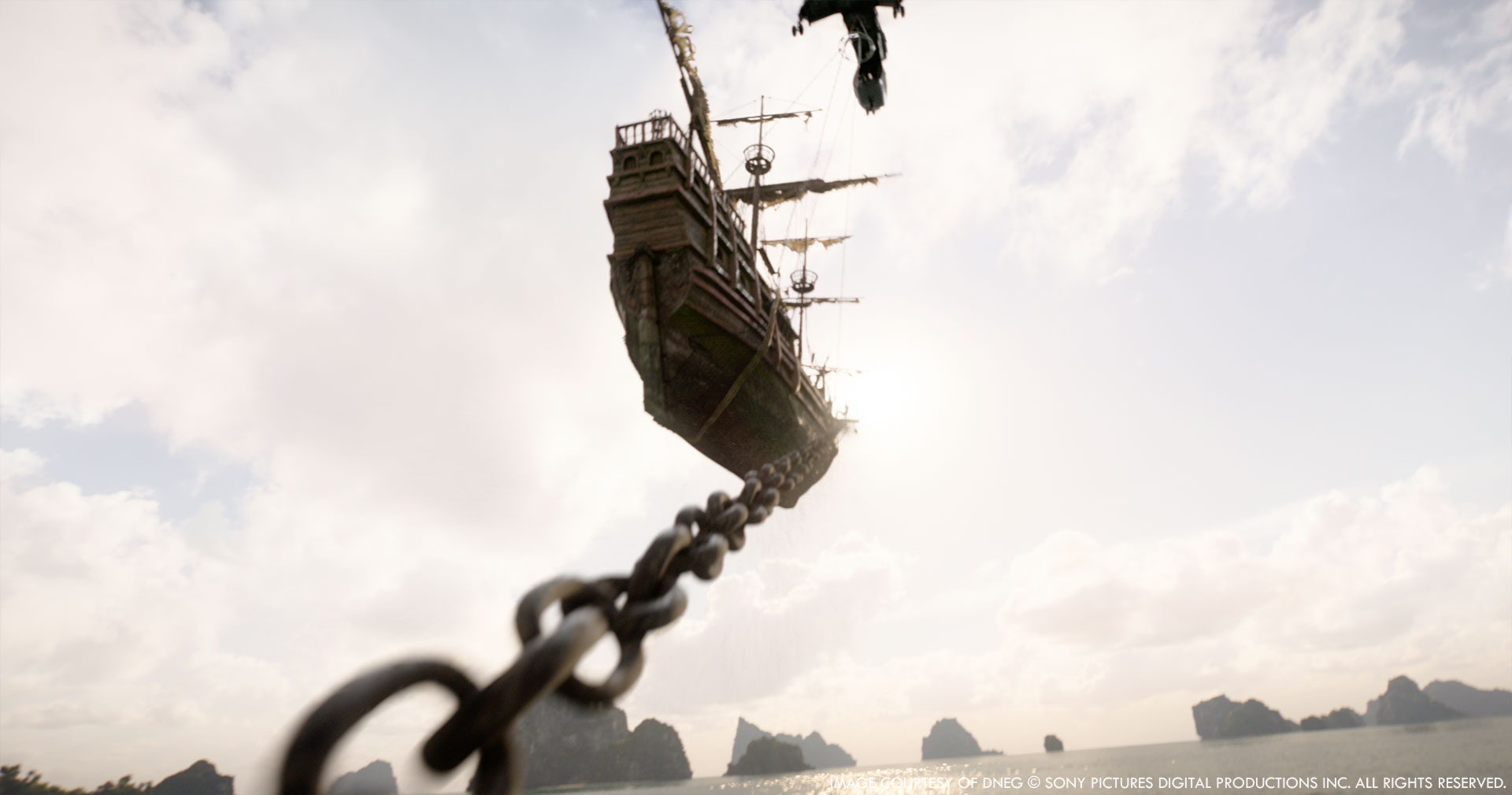
How was created the various FX work such as the explosion, the debris and of course the water?
All the FX work was done in SideFX Houdini in combination with DNEG proprietary tools and workflows, and then rendered in Isotropix Clarisse. I really enjoy this part of the process because you can get both surprising and inspiring results from simulations. Obviously the whole pipeline starts with building the ships we would need, at the size that we designed which then went into blocking out the shot composition and animation before we fired up our first simulation. From experience we all already knew the results could be interesting given the scenario. For the shot when the Concepción gets dropped into the water, the team presented the first test based on an average weight of a Galleon, the height the helicopter dropped it and the animation of the actual drop, and everyone went: “Wow! That’s a big splash and wave.” That’s the inspiring moment and it all made sense. The backlight from the sunset, the warmth you feel through the spray and mist while silhouetting the ship. From there the hard work begins to make all that work for the movie. We had a fantastic team led by FX Supervisor Lisa Nolan and our FX Leads James Charles and Christopher Phillips who also eventually smashed the Trinidad against the rocks.
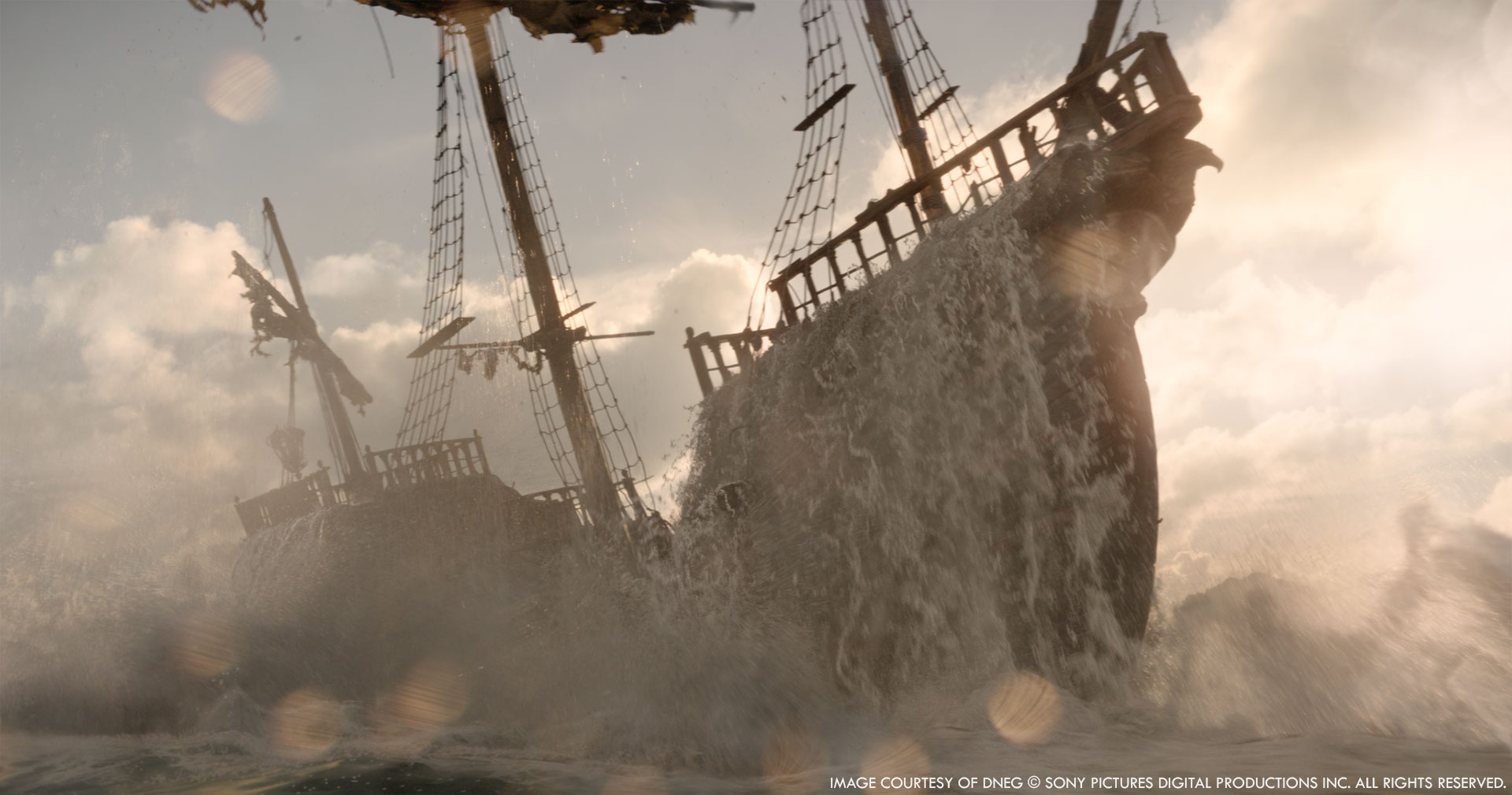
Which sequence or shot was the most challenging?
When Nate and Chloe fall out of the C17 definitely was a fun challenge. We called this sequence The Oner because it’s constructed as one continuous 90 second shot. It was complex because we had several practical elements with the actors hanging on wires and interacting with a stand-in car prop. We combined the practical elements with long stretches of full-CG moments. Some sections required either close-up digi doubles to hold up, or even a transition between plate and digi double right in camera with nowhere to hide. Mix that with the disorienting camera, and you have quite a complex puzzle to solve. An additional challenge was the lighting in the open sky. The plates were shot on a sound-stage with stationary lighting but our characters fall tumbling through an environment with only one light-source, the sun. DFX Supervisor Daniel Elophe and the team broke this mammoth puzzle down into manageable sub-sections which were assembled to one long shot in Compositing at the end. The team around Lighting Supervisors Sonny Sy, Chris Rickard and Compositing Supervisor Francesco Dell’Anna kept track of changing light directions and found creative solutions to make it all work with the plates, while allowing for a free choreography of the camera and the animation, done by Layout Lead Steve Guo and Senior Animator Patrick Kalyn. The result works really well and we ended up getting the best of both, seeing the sun rotating on high-action free fall moments while coming back into a more character focussed lighting when there is dialogue and we’re locked into practical photography.
What is your favorite shot or sequence?
It’s really hard to choose because you are living and breathing every single shot for a year, so you get attached to every shot even. Narrowing it down I’d probably choose the shots around the moment when the Concepción gets dropped into the water, sets its sails and then falls apart. Dropping something as complex as the Concepción with its sails and ropes and all into water to create even more complex CG water FX, and then staging it into a backlit sunset environment is just highly satisfying for a visual effects artist. Hard work for everyone involved I might add, but still something that puts a smile on my face every time I watch it. The whole 3rd Act was fun to work on with lots of big shots.
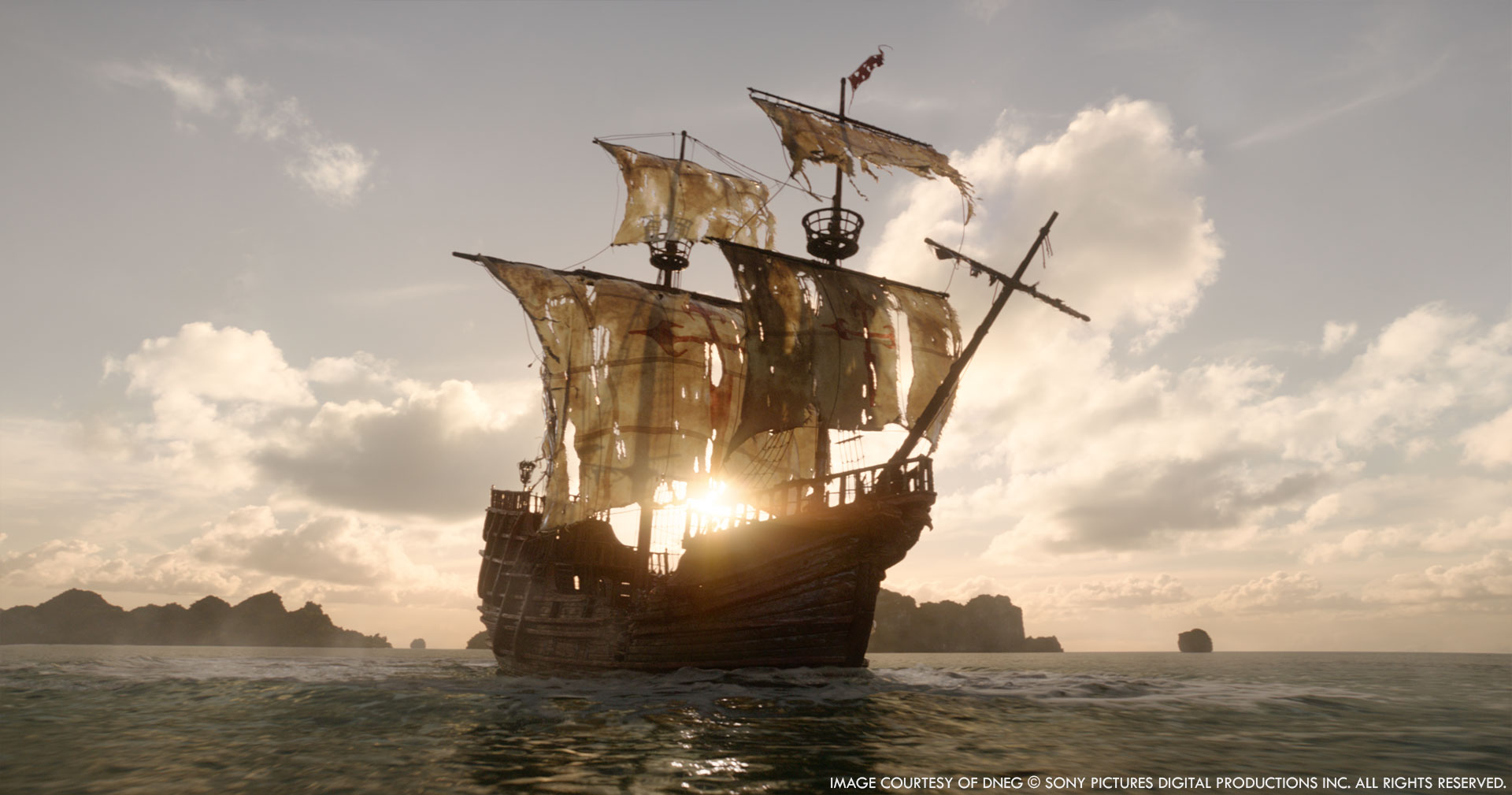
What is your best memory on this show?
It feels great coming out of this show knowing that a large global team accomplished this during the pandemic, everyone working from home. It’s just incredible how adaptable and resilient artists in the Visual Effects industry are and it makes me proud of our teams.
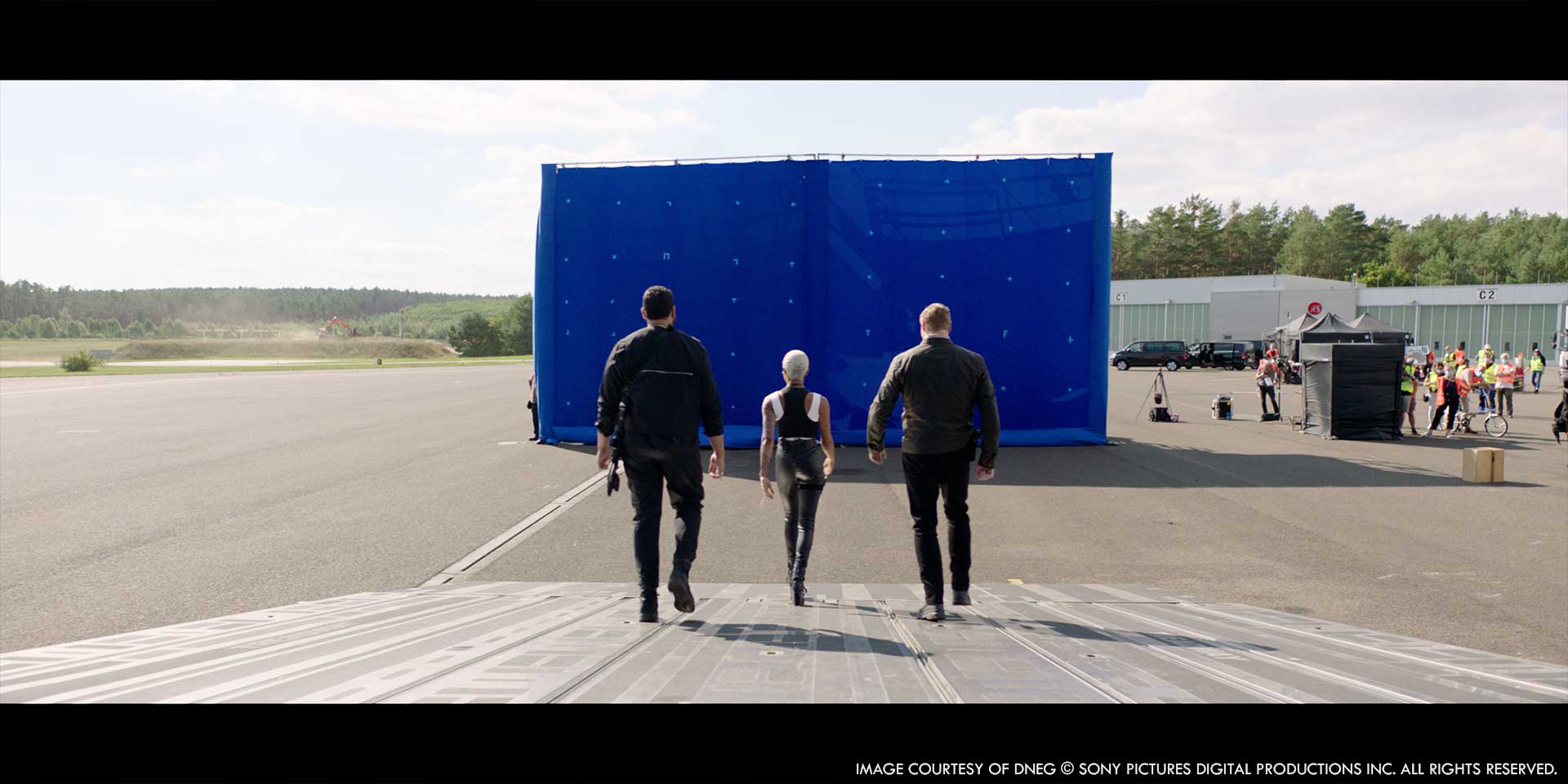
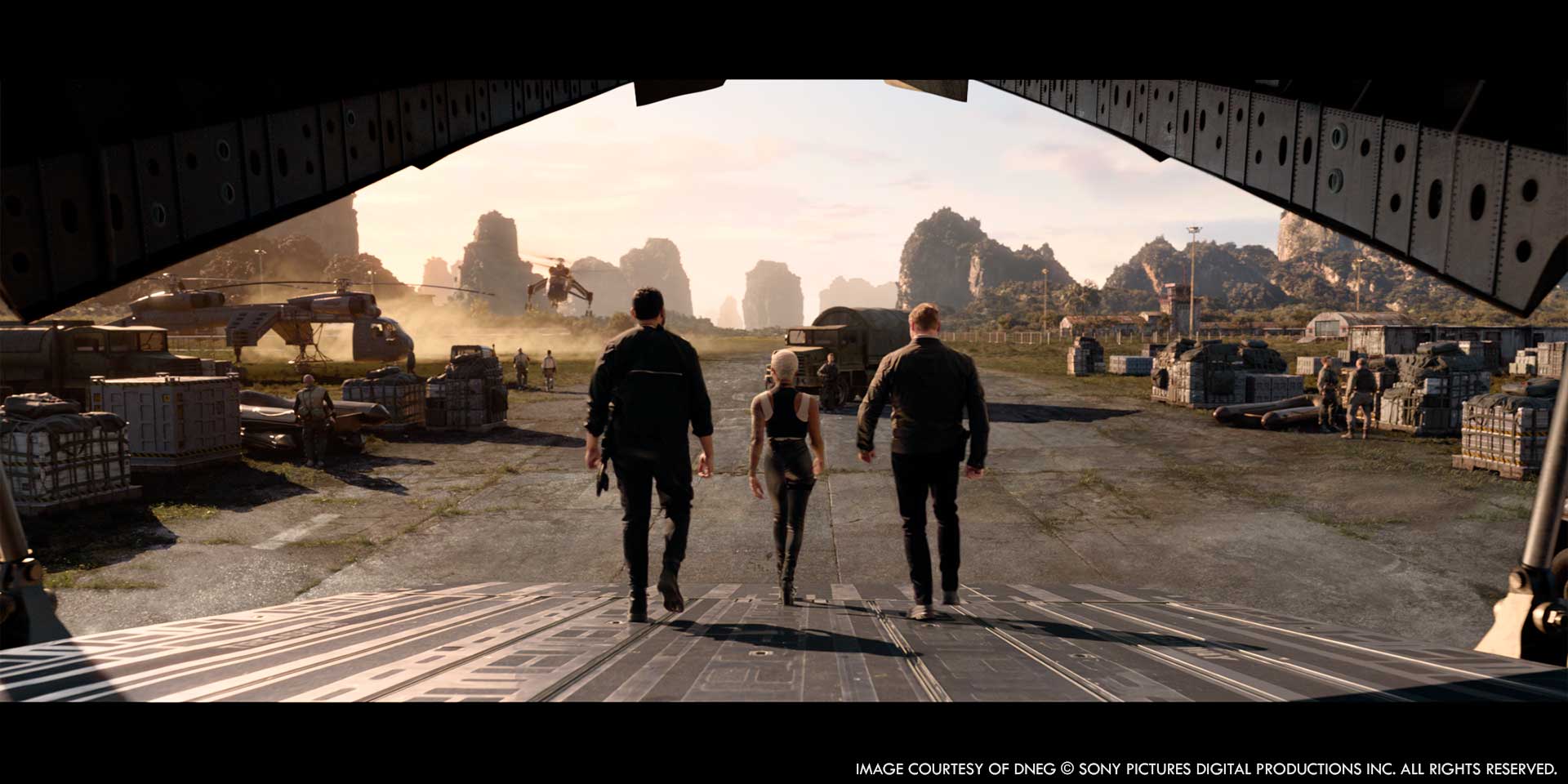
How long have you worked on this show?
About 15 months from first conversations to delivering the very last bits and pieces.
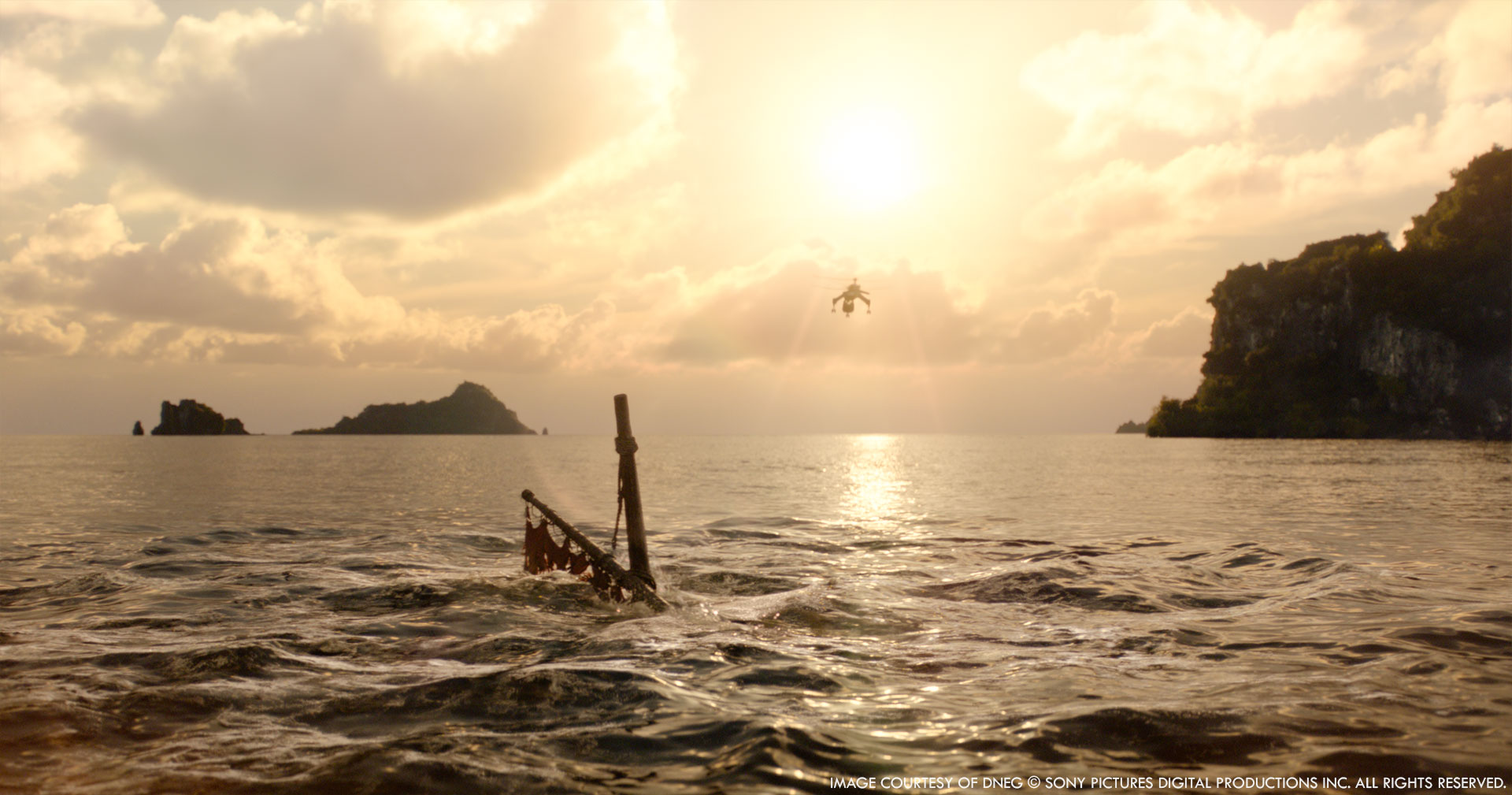
What’s the VFX shots count?
739 shots split across Vancouver, Montreal and Mumbai.
What is your next project?
I’m currently working on Disney’s ‘Haunted Mansion’.
A big thanks for your time.
// Uncharted – One Shot VFX Breakdown – DNEG
// Uncharted – Exclusive Scene – Plane Fight
WANT TO KNOW MORE?
DNEG: Dedicated page about Uncharted on DNEG website.
© Vincent Frei – The Art of VFX – 2022






